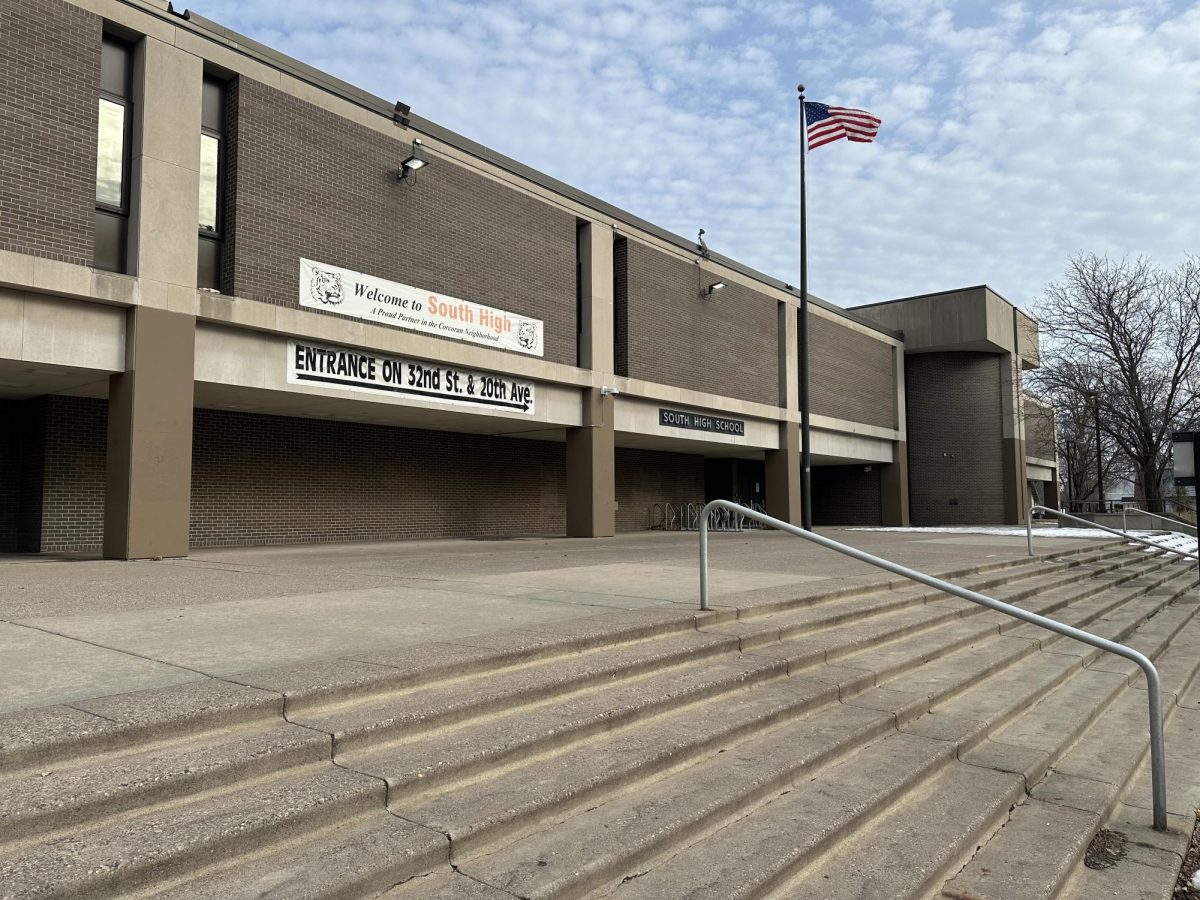Note: This article is a part of the Southerner’s special edition coverage of South’s 2024 budget cuts.
In the early-2000s, South High students didn’t have the same elbow room in the hallways that current students enjoy. However, this was made up for by the expansive catalog of unique and exciting classes offered to them. But with each subsequent year that South experienced declining enrollment, it lost funding and had to cut positions and programs. After many consecutive years of this pattern, it feels like South has hit educational bedrock, but the district keeps digging deeper. Next year, South will be operating with approximately fifteen less core-subject teachers than it is currently, a reality which would be unfathomable a generation ago.
Founded in 1885 and educating 2,200 students at the height of enrollment, South is the oldest and formerly largest Minneapolis public high school. It’s always prided itself on diversity, strong student-teacher relationships, and unique elective programs. One such program South offered for years was Project Lead The Way (PLTW). PLTW was a series of in-depth STEM classes offering college credit that could be taken freshman through senior year. Unfortunately, after years preparing kids for STEM majors, it was cut at the beginning of this year, leaving students stranded halfway through the program.
On the other hand, a gem South has managed to maintain is its dance program. Although next year only two dance classes will be offered, compared to the five that existed in 2021, many are at least relieved that the program isn’t being cut entirely. Principal Runsewe’s budget plan for next year aims to prevent this and to protect the remaining elective programs. He believes each program can be built back up as future enrollment numbers increase.
The reason it feels like South’s class offerings shrunk so rapidly can be attributed to the Comprehensive District Design (CDD). The CDD was a new zoning map introduced in 2020 that was designed to make city bus routes to each school more accessible. However, many families were caught off guard by the plan and were unhappy about their kids being separated from peers they had grown up with. “All my friends from 8th grade didn’t end up going to my highschool. I wish the zones didn’t change so I could have stayed with them,” says South sophomore Eli Milinkovich. Milinkovich has felt the impacts immensely and plans to put in a request to switch schools at the start of his junior year. Moreover, the new zone for South eliminated a large section of single family homes in Longfellow and added rows of apartment blocks along Lake Street. This increased the already high concentration of poverty at South and caused some families to send their children elsewhere. Additionally, many students who would be coming from the predominantly Latino communities which are now a part of the South zone are instead opting to go to local charter schools, like El Colegio or Hiawatha Collegiate High School.
Many teachers, like freshman social studies teacher Abigail Gaul, are worried that South hasn’t properly adapted to their recent enrollment numbers. “I think there are legitimate concerns about the academic program offerings and rigor at South,” she said. “The fewer teachers we have, the fewer niche and elective classes we can offer.” With the array of class options narrower than ever, how will South students access unique and challenging courses that stand out on a college application?
South may begin to see a paradigm shift, where standardized testing becomes a higher priority than in years past. This is because all AP class offerings will remain but other alternatives to standard grade-level courses may be in jeopardy due to the reduced staff. So students looking to challenge themselves at South can only do so by loading up on AP classes. For many students, this option simply isn’t appealing and could push them towards PSEO. Because of this we may see increased competition for PSEO spots.
While budget cuts will be felt throughout every school in the district, South will have a particularly hard time remaining competitive next year. For weeks, Principal Runswewe has been trying to assure the community that South is resilient and these cuts will not overshadow what makes South special. He said, “I’ve worked in a lot of different schools and South is truly my favorite… If we maintain an incoming class of 275 we can keep our status as a ‘large high school’ and I think that’s easily attainable. There’s a lot of negative narratives right now but if we keep supporting our feeder schools and making sure that people in the community have all the facts we’ll be fine.” However, only time will tell if South will be able to abate the reluctance from local parents to send their kids to South. Even if South can re-establish its reputation as a top public school, many parents will still feel more secure putting their kids into private schools given the recent instability in MPS. “A lot of families are leaving the district and choosing charter or suburban schools just because they don’t want to be told where they have to go and have that whole thing uprooted and changed,” mentions Gaul. Next year the number of families who send their kids elsewhere could be substantial. There are a lot of unknowns right now about how the budget cuts will affect students. But if South communicates the message to prospective families that despite being much smaller than it used to be in a number of ways, it’s still a strong community of dedicated teachers and diverse students, then South will remain a vibrant learning environment for many years to come.


